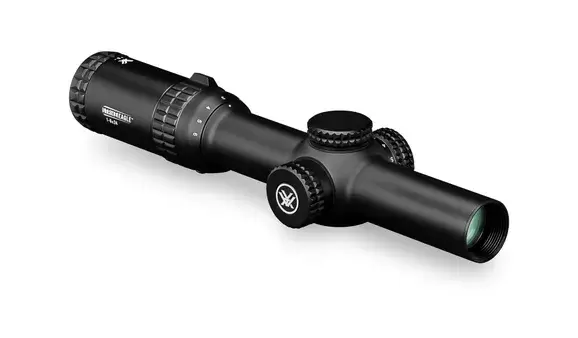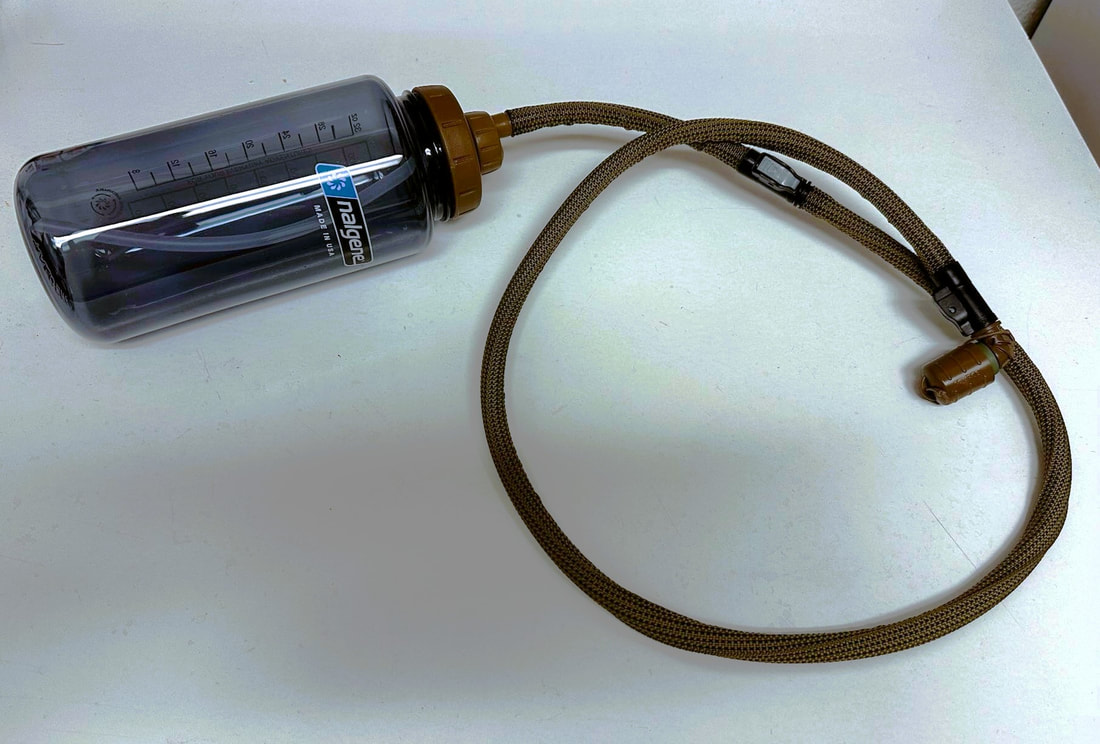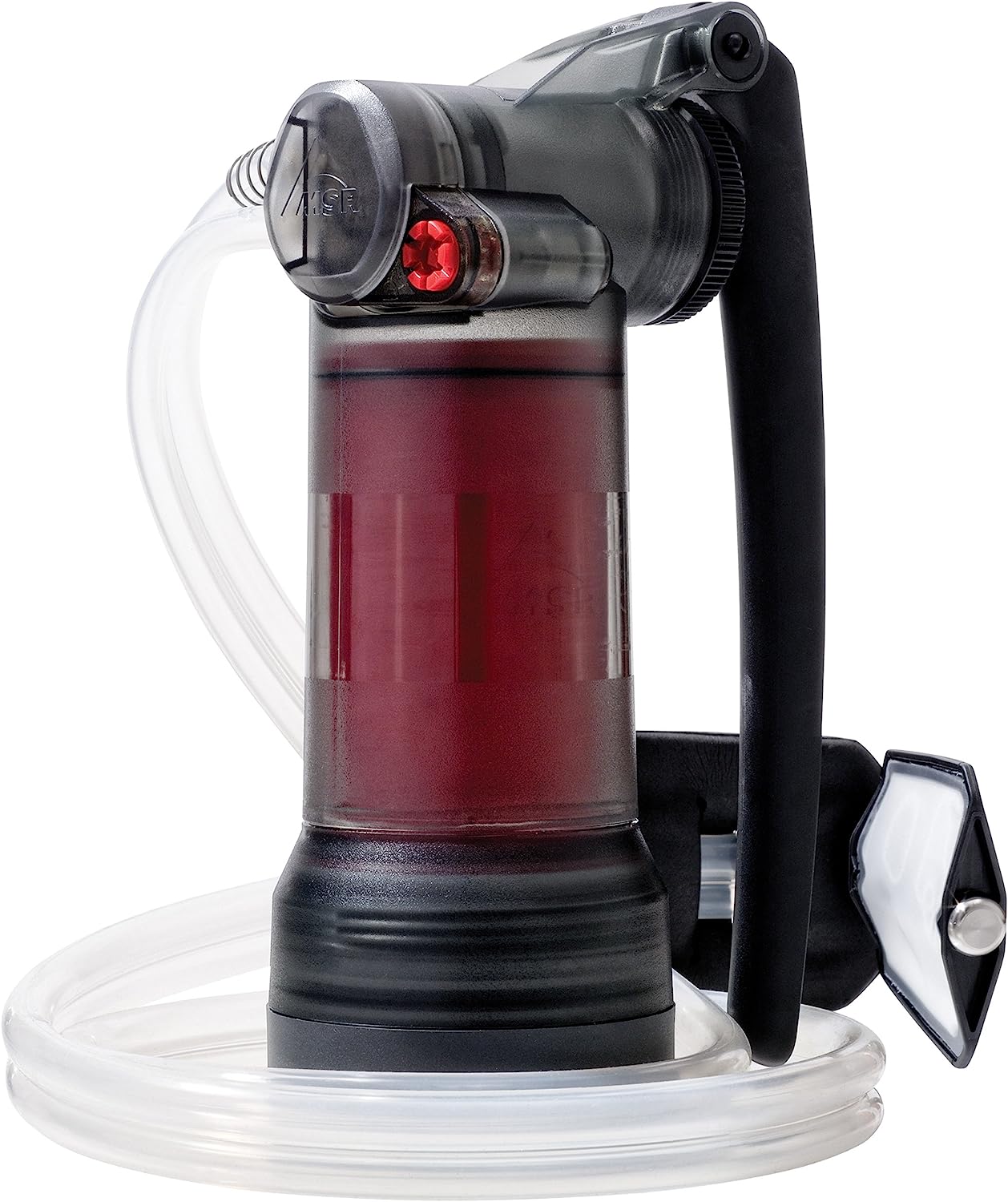|
An LVPO is a Low Power Variable Optic. These are rifle scopes that have a variable magnification range of 1x up to 10x. They are intended for medium range shooting (200-500 yards or an AR-15’s effective range) while allowing 1x shooting for close range targets. Adjustments are a rapid turn of a dial, often equipped with a large, easy to move, throw lever. For those who may be shooting at close ranges one moment and long range the next, they can give a lot of advantage over other solutions.
LVPO pros:
Fixed magnification scopes like ACOGs are popular, often at 4x, but the magnification is always present. Zooming in close all the time isn’t always better. Only having a single setting high magnification scope on your AR is kinda like driving using binoculars. Lots of people don’t like 4x only on their ACOGs. Magnification at close range distorts the field of view (zooms in too much) making it non-ideal for indoor targets or those at say <50 yards. Red dots are often x1 and are used for 25-200 yard range targets. These can be used in combination with night vision or a flipping magnifier mounted on the weapon in-line with the sight. A red dot and a magnifier will generally weigh less than an LVPO but these magnifiers are often only one fixed magnification level and protrude from the weapon to the side slightly when not in use. For up close shooting, there is no way to make fixed scops go to 1x. One solution was to mount a small red dot in addition to the ACOG or whatever. Some versions have this second sight above the scope, raising the height over bore (which would make a negligible difference for near-range shots) or offsetting them say at 45° necessitating that the rifle be canted to use the red dot. An LVPO is just one item on your rifle. The ability to see targets better at a further distance appeals to me. You can better identify a hostile target or verify if that deer is mature enough to be taken without switching to binoculars. It’s easier to hit a target like a head a few hundred yards out with a magnified sight picture than hoping for a minute-of-man center of mass shot at range. LVPO cons:
Many users report that they only used the 1x or maximum magnification, negating the "variable" aspect of the scopes. For them, it was either up close and no magnification or dial it in to the highest setting. Intermediate settings didn't help, although many of the anecdotes don't tell us what the maximum setting was. At 4x, skipping the settings in between is understandable but maybe you'd want the improved field of view at 6x versus zooming all the way in to 8x when you don't need go that far. Why can't you just have the 1x, 4x, and 8x? Why do I have to go through 2-7x? Because of the way the magnification works, you are moving parts inside the scope and there is intermediate magnification in between the most common settings. It's like complaining that you have to shift through 2nd-5th gears to put the transmission into 6th. It’s worth noting that on more budget friendly scopes, the reticle matters. On single focal plane scopes, the reticule distance markers are only accurate at a given magnification, often the maximum magnification. For reticles that stay the same regardless of the magnification, get a second focal plane scope. Zero magnification and normal eyesight using iron sights or red dots make viable accuracy out to 200-300 yards (depending on skill). An AR-15's maximum effective range against a static target is about 400-600 yards for a good shooter. Do you need to shoot that far? For most people, probably not. Most infantry engagements occur at less than 200 yards and urban fighting under 100 yards. A LVPO will make those medium range shots easier though. When I actually shot my Vortex Strike Eagle 1-6×24, the first thing I noticed was the weight. It was a little heavy on my 16” AR-15 but nothing that I couldn’t deal with. More upper body strength alleviates this concern and so does throwing it on a rest of some kind. With a bipod it would be negligible. The weight was not awkward though. Accuracy was fine, better than me. Controlling the magnification will take practice. At first, I had it at 1x and was surprised only the reticle seemed special. Even with the throw lever, it will take some getting used to in order to efficiently dial in the right magnification for the distance. Not that the actual process is hard, rather I mean getting my brain to naturally remember what zoom is best for what distance and teach myself that muscle memory. Once that’s ingrained I expect it to be a breeze. I was shooting at 200 yards in desert terrain in the early morning twilight. Ordinarily, I would have trouble picking up my steel target at that distance with a 1x scope due to lighting and the terrain color making the yellow spray paint I’ve been. At 3x, I had no problem finding and identifying my dun colored target covered with lead splatter that blended in with the dirt and shadows. I haven’t practice hitting targets after traversing but I think keeping a sight picture while swinging the rifle around won’t be any more difficult than with a red dot. For this Vortex in particular, it fit over my rear back-up iron sight, but I’d have to remove the scope if it failed some how to shoot off my backup irons. Scope shadow and parallax was a problem because of the eye relief issues as above but they were manageable as long as I adjusted the stock and kept my head planted firmly. Again that’s probably muscle memory. For a budget LVPO, I would recommend the Vortex Strike Eagle (either x6 or x8). It’s a good entry point and you can find out if you like the concept or not. Mine was $299 with a cantilever base from PSA using discount code “STRIKE” (may vary when you see this article). Thanks to UncleZo for posting the link on Twitter; @UncleZoGunTales and http://www.unclezo.com. Comments are closed.
|
Author Don ShiftDon Shift is a veteran of the Ventura County Sheriff's Office and avid fan of post-apocalyptic literature and film who has pushed a black and white for a mile or two. He is a student of disasters, history, and current events. Archives
May 2024
Categories
All
As an Amazon Associate I earn from qualifying purchases.
|

 RSS Feed
RSS Feed






